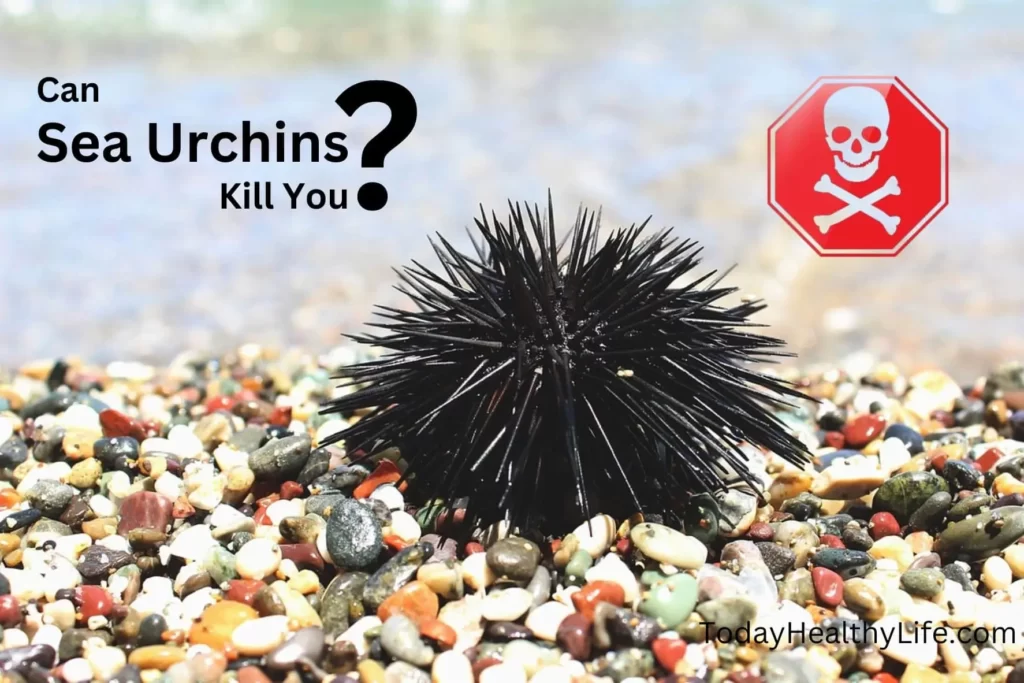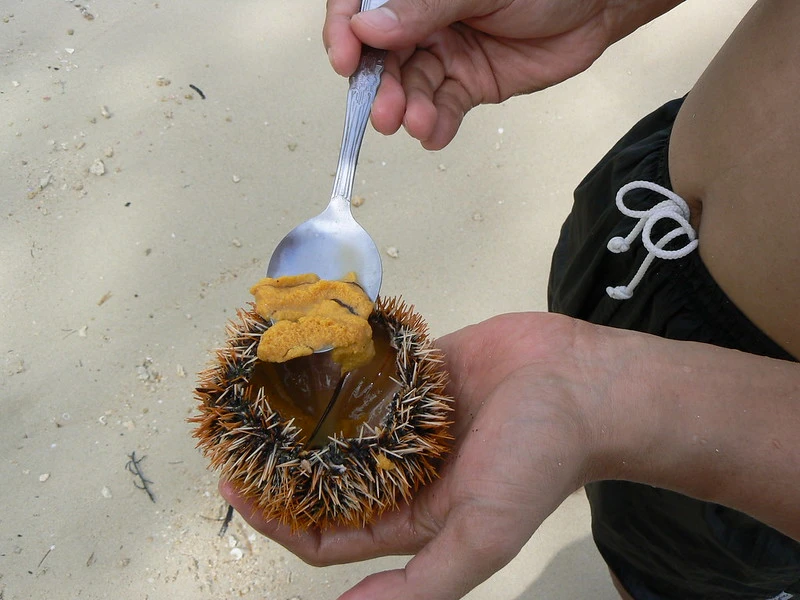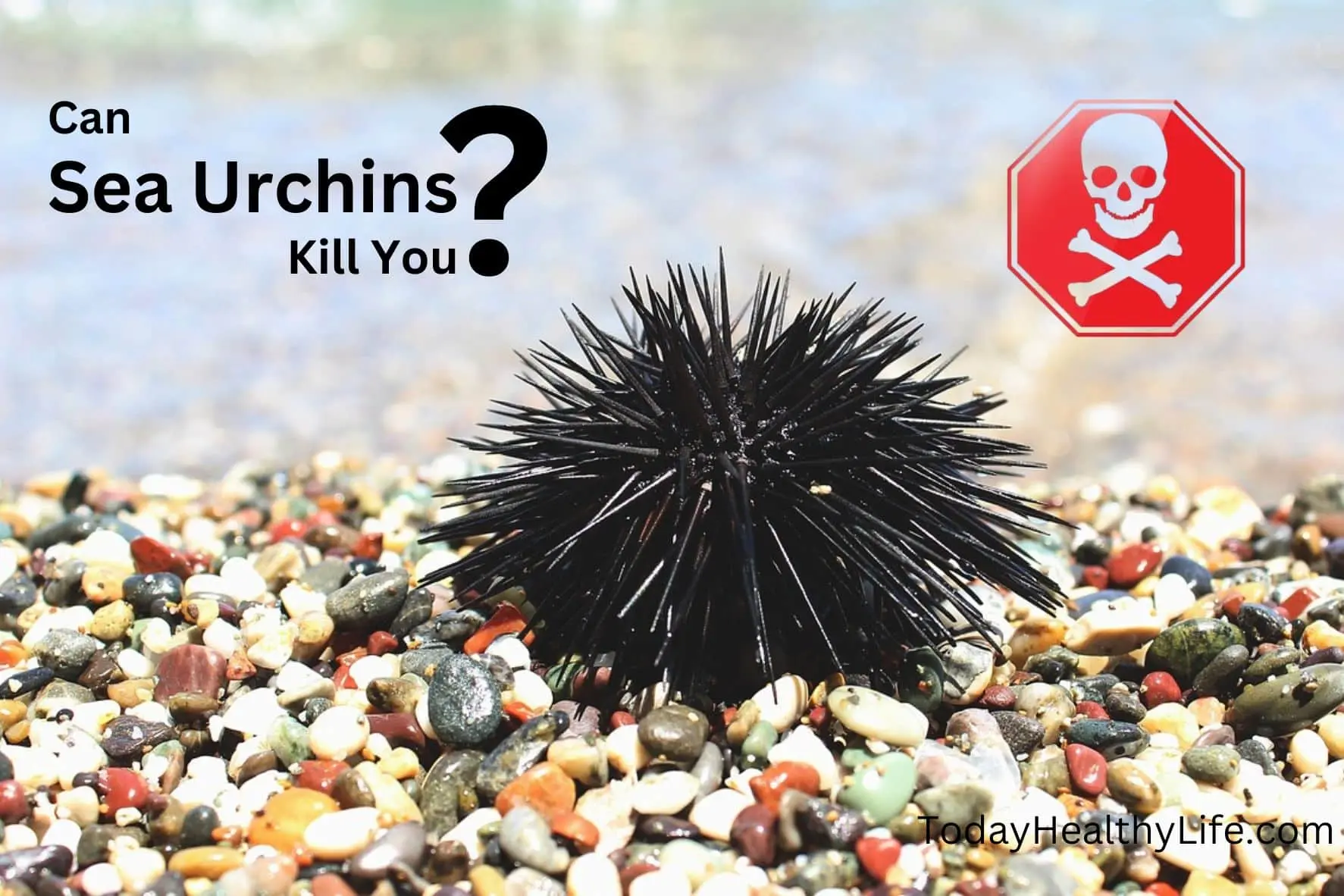Sea urchins, with their spiky exteriors and fascinating presence in marine ecosystems, are often the subject of curiosity and wonder.
While these creatures may seem harmless, their spines can be a cause for concern.
In this article, we delve into the question: Can sea urchins kill you?
Let’s explore the intriguing truths behind the potential dangers associated with encounters with sea urchins.
Table of Contents
Understanding Sea Urchins:
Sea urchins belong to the phylum Echinodermata and are found in oceans across the globe.
These spiny creatures possess a unique spherical or oval shape, covered in sharp, pointed spines.
Their spines serve as a defense mechanism against predators, and they are primarily used for protection rather than offense.

Can Sea Urchins Kill You?
No, sea urchins cannot typically kill you.
While sea urchins have spines that can cause injuries and discomfort, they do not possess the means to deliver a lethal attack.
Fatalities caused by sea urchins are extremely rare.
However, it’s important to note that sea urchin stings can be painful and may lead to complications if not treated promptly.
The spines can easily puncture the skin, causing irritation, swelling, and potential infections.
In some cases, broken spines may remain lodged in the skin, increasing the risk of infection.
To prevent injuries from sea urchins, it is advisable to take precautions such as wearing protective footwear like water shoes while walking in areas where sea urchins might be present.
Additionally, being observant of your surroundings while swimming or snorkeling can help you avoid accidental encounters with these spiky creatures.

Also read:
- Eating Sea Urchin Side Effects, Benefits & More Information.
- Why Are Gooseneck Barnacles Dangerous? – Resistance Way & All.
Potential Hazards:
While sea urchins are not typically aggressive towards humans, accidental encounters with their spines can result in painful injuries.
Their spines are sharp and can easily puncture human skin, causing irritation, swelling, and even infections.
However, it’s essential to note that fatalities caused by sea urchins are extremely rare.
Toxicity and Venom:
Sea urchins are not venomous in the same way that snakes or spiders are. They do not have fangs or stingers that inject venom into their prey.
Instead, they have spines that are coated in venom. When a sea urchin is stepped on or handled, the spines can break off and penetrate the skin.
The venom can then be released into the wound.
The venom of sea urchins varies in toxicity from species to species. Some sea urchins have venom that is mild and only causes localized pain and inflammation.
Others have venom that is more potent and can cause systemic symptoms such as nausea, vomiting, headache, and muscle weakness.
In rare cases, the venom of sea urchins can be fatal.
Common Injuries and Complications:
The most common injuries caused by sea urchins occur when a person accidentally steps on one while swimming or walking along the seashore.
The spines can penetrate the skin, leading to pain, redness, and inflammation.
In some cases, the broken spines may remain lodged in the skin, increasing the risk of infection.
Severe complications, such as allergic reactions or secondary infections, may arise if the injury is not promptly treated.
Treatment and Prevention:
If you are unfortunate enough to encounter a sea urchin sting, it is crucial to seek medical attention.
The treatment may involve removing any remaining spines, cleaning the wound thoroughly, and administering antibiotics or tetanus shots if necessary.
Applying heat to the affected area can help alleviate pain.
To prevent sea urchin injuries, it is advisable to take certain precautions.
When walking in areas where sea urchins might be present, wearing sturdy footwear, such as water shoes, can offer protection.
Additionally, carefully observing your surroundings while swimming or snorkeling can help you avoid accidental encounters with these spiky creatures.
Ecosystem Importance:
Sea urchins are important members of marine ecosystems. They are herbivores, meaning they eat algae.
This helps to control the growth of algae, which can otherwise become overgrown and smother other marine life.
Sea urchins also provide food for a variety of predators, including fish, birds, and seals.
In some ecosystems, sea urchins play a critical role in maintaining the balance between coral and algae.
When sea urchin populations are healthy, they help to keep algae in check, allowing coral to thrive.
However, when sea urchin populations decline, algae can grow unchecked, smothering coral reefs.
This is a problem that is being seen in many parts of the world, due to a variety of factors including overfishing, pollution, and climate change.
Sea urchins are also important for recycling nutrients in the marine environment.
When they eat algae, they break it down into smaller pieces that can be used by other organisms. This helps to keep the nutrient cycle in balance and supports the diversity of life in the ocean.
Overall, sea urchins are important members of marine ecosystems and play a variety of important roles.
They help to control the growth of algae, provide food for predators, and recycle nutrients.
By understanding the importance of sea urchins, we can better protect them and the marine ecosystems they depend on.
Here are some additional facts about the ecosystem importance of sea urchins:
- Sea urchins are found in all of the world’s oceans, from the tropics to the poles.
- There are over 900 species of sea urchins.
- Sea urchins are an important food source for many marine animals, including fish, birds, and seals.
- Sea urchins help to control the growth of algae, which can otherwise become overgrown and smother other marine life.
- Sea urchins are also important for recycling nutrients in the marine environment.
- Sea urchins are vulnerable to a variety of threats, including overfishing, pollution, and climate change.
By understanding the importance of sea urchins, we can better protect them and the marine ecosystems they depend on.
Is It Ok to Leave Sea Urchin Spines in Your Foot?
No, it is not okay to leave sea urchin spines in your foot. The spines can break off and remain in your skin, causing pain, inflammation, and infection.
If you step on a sea urchin, it is important to remove the spines as soon as possible. You can do this by:
- Soaking the affected area in hot water for 15-30 minutes. This will help to soften the spines and make them easier to remove.
- Using tweezers to carefully remove any spines that are visible.
If you are unable to remove all of the spines yourself, or if you experience severe pain or swelling, you should seek medical attention.
How Long Does It Take for Sea Urchin Spines to Dissolve?
Sea urchin spines can dissolve within a few days, or weeks and the best way to speed up the process is to soak the wound in vinegar or hot water.
Vinegar helps to dissolve the spines by breaking down the proteins that make up the spines.
Hot water also helps to dissolve the spines, but it can also damage the skin. If you are using hot water, be sure to cool the area down after soaking for a few minutes.
If you are not able to get to vinegar or hot water, you can try to remove the spines yourself with tweezers.
Be careful not to break the spines, as this can make them more difficult to remove and can also lead to infection.
Once you have removed the spines, it is important to clean the wound with soap and water. You can also apply a cold compress to help reduce pain and swelling.
Related FAQs:
Sea urchins cannot kill humans. While they possess venomous pedicellariae, the venom is generally not lethal to humans. Fatalities caused by sea urchin stings are extremely rare. The primary concern with sea urchin stings is managing the pain, preventing infection, and addressing any complications that may arise. Seeking medical attention promptly and following proper treatment protocols can ensure a speedy recovery.
Yes, black sea urchins are poisonous. They have two types of venomous organs: spines and pedicellaria. The spines are sharp and can easily pierce the skin, injecting venom. The pedicellaria are small pincers that can grab onto skin and inject venom.
No, sea urchins do not possess the ability to paralyze humans. Sea urchins are not known to produce toxins or venom that can induce paralysis. While their spines can cause injuries and discomfort, the effects are typically localized and do not result in paralysis. The primary concern with sea urchin stings is the mechanical injury caused by the spines, which may lead to pain, inflammation, and potential complications if not properly treated. If you have been stung by a sea urchin and are experiencing severe symptoms or an allergic reaction, it is advisable to seek medical attention for appropriate evaluation and care.
Sea urchin spines do not dissolve naturally in the skin. The spines are composed of a hard, calcified material called calcium carbonate, which does not readily dissolve in body tissues. If sea urchin spines become embedded in the skin, they may need to be manually removed by a healthcare professional. Leaving the spines in the skin can increase the risk of infection and other complications. It’s important to seek medical attention for proper evaluation and treatment to ensure the prompt and safe removal of sea urchin spines.
WARNING
In some cases, sea urchin spines can migrate deeper into the body and cause more serious problems.
If you experience any of the following symptoms after being stung by a sea urchin, you should seek medical attention immediately:
- Fever
- Chills
- Swollen lymph nodes
- Redness, swelling, or pain at the sting site
- Pus or drainage from the sting site
- Difficulty breathing
- Numbness or tingling in the area around the sting site
- Muscle weakness or paralysis
It is important to note that not all sea urchins are venomous. However, even non-venomous sea urchins can cause pain and discomfort if their spines break off in the skin.
Here are some additional tips for avoiding sea urchin stings:
- Wear shoes or sandals when walking on rocky beaches.
- Be careful when swimming in areas where sea urchins are present.
- Look for sea urchins before entering the water. They are often found in tide pools, on rocks, and in seaweed.
- If you do get stung by a sea urchin, do not panic. The pain will usually subside within a few hours.
Conclusion:
While sea urchins may appear intimidating, they do not possess the means to kill humans.
Although injuries caused by their spines can be painful and lead to complications if not treated promptly, fatalities from sea urchin encounters are exceedingly rare.
By exercising caution and treating injuries appropriately, it is possible to coexist with these intriguing creatures while enjoying the beauty of our oceans.
Remember, respecting the natural environment and its inhabitants is key to promoting harmony and understanding in the vast world beneath the waves.

